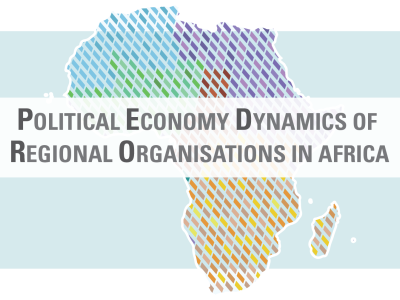
AU Summit in Malabo: Moving agricultural development and food security forward
Today the African Union (AU) Summit of Heads of State and Government in Malabo, Equatorial Guinea comes to a close. The spotlight is on agriculture and food security in Africa, as the main theme of the conference.
What Can We Expect to Come Out of the Summit and Why Would African Citizens Care?
It is expected that the AU leaders will go beyond ceremonial speeches and renew their commitment to CAADP, by agreeing on a concrete set of ambitious goals for agricultural development and food security to be reached by 2025.
Last time around AU Heads of State and Government at their previous summit (Addis Ababa, January 2014) launched the Year of Agriculture and Food Security in Africa, to mark the 10th anniversary of Comprehensive Africa Agricultural Development Programme (CAADP).
Indeed in May 2014, the AU Joint Conference of Ministers of Agriculture, Rural Development, Fisheries and Aquaculture adopted a resolution endorsing seven ‘Africa Accelerated Agricultural Growth and Transformation Goals’ for 2025 for consideration by the AU Heads of State and Government in Malabo.
- Recommitment to the Principles and Values of the CAADP Process
- Recommitment to the allocation of at least 10% of public spending on agriculture
- Commitment to Zero Hunger through (i) at least doubling agricultural productivity by focusing on inputs, irrigation, and mechanization; (iii) reducing Post Harvest Losses (PHL) by at least by half, and (iii) Improving Nutrition - reduce stunting to 10%
- Commitment to reduce poverty through agricultural transformation by half, through: (i) sustaining annual sector growth in agricultural GDP by at least 6%; (ii) establishing and/or strengthening inclusive public-private partnerships for at least five (5) priority agricultural commodity value chains with strong linkage to smallholder agriculture; and (iii) creating job opportunities for at least 30% of the youth in agricultural value chains.
- Commitment to triple Intra-African Trade in Agricultural commodities
- Commitment to ensuring for at least 30% offarm/pastoral households to be resilient to shocks
- Commitment to the CAADP Results Framework and to an Agricultural Review Process to be conducted every two years.
These Goals Reveal the Envisaged Direction
Agriculture remains high on the development agenda of the continent. In this spirit, AU Chairperson Zuma, in her opening statement of the Executive Council earlier this week, called agriculture and food security ‘a critical priority’ for Africa and a key element of the AU long-term development vision ‘Agenda 2063’ currently under construction. It is considered critical for economic growth and poverty reduction.
Governments confirm CAADP commitments made more than 10 years ago for countries to allocate at least 10% of public spending to agriculture to achieve 6% of annual agricultural growth, even though most AU Member States have not put this into practice so far. Since 2003, only 13 countries have met or surpassed the 10% public spending target in one or more years and overall agricultural production has increased, but remained well below the annual 6% growth target.
The focus is broadened beyond spending and production, with concrete targets related to issues such as reducing post harvest losses, increasing value addition, creating job opportunities and building resilience. Much attention also goes out to improving the functioning of agricultural markets and intra-African trade, with an ambitious goal to triple intra-African trade in agricultural commodities.
However, these goals reveal little about the type of agricultural growth and transformation that the continent seeks. What role for large-scale farming and for smallholder family farming, for example? If Heads of States adopt the wording proposed by their agricultural ministers, then “with strong linkage to smallholder agriculture” is likely to be lauded by some for its recognition of smallholders, while others will claim it is too vague a commitment.
Another politically sensitive issue is the place of food sovereignty. While the background notes of the summit seem to carefully avoid this word, the head of the NEPAD Agency stated recently at the 10th CAADP Partnership Platform that “We should upgrade the African food security strategy to a food sovereignty strategy…”. This stems from the increasingly high food import bill and the desire, instead, for Africa to feed itself. Do African Heads of State endorse this food sovereignty aspiration, which may imply controversial policies to protect African markets (more) from imports? And how does an African food sovereignty strategy (i.e. continental level) fit with the food sovereignty ambition of the Economic Community of West African States that is at the heart of their regional agricultural policy (i.e. sub-regional level), and the Nigerien presidential initiative aiming for ‘Nigeriens to Feed Nigeriens’ (i.e. national level)? This merits more discussion and coherent policy initiatives.
It will be interesting to keep an eye out for the outcome of the summit and the way it’s implemented. While these high level jamborees may seem far away from realities that African citizens face, they do bring commitments to which public opinions can hold their governments to account.
The views expressed here are those of the author, and may not necessarily represent those of ECDPM.




